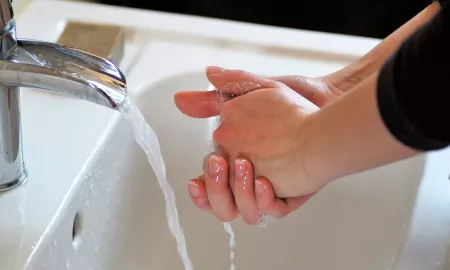Legionella bacteria are common in nature and can easily colonise and proliferate in man-made environments such as hot and cold water systems, but how do you manage this risk? Paul Sear, water hygiene technical manager, Built Environment Services, SOCOTEC, explains the importance of training.

Legionella bacteria are common in nature and can easily colonise and proliferate in man-made environments such as hot and cold water systems, but how do you manage this risk? Paul Sear, water hygiene technical manager, Built Environment Services, SOCOTEC, explains the importance of training.
Do you know who is responsible for managing the hot and cold water systems in your building? Do they carry out the maintenance of your systems? If you’re unsure, or have not appointed a responsible person (RP) then you may be legally responsible for Legionella control.
It may have been a few years since you last received training, or you may never have attended a course, but it’s important to have a clear understanding of why you must manage and control the risk of Legionella in your water systems.
Are your systems at risk?
Legionella bacteria multiply at temperatures between 20°C and 45°C. Areas of particular risk are those containing dirt, sludge or scale and in stagnant waters and plant. Systems with a high risk include:
- Cooling systems incorporating a cooling tower or evaporative condenser
- Hot and cold water systems
- Spa pools
- Aerosol generating systems such as showers
- Other plant and equipment containing water and which can release a spray or aerosol during operation or maintenance
What should you do?
Those responsible for managing water systems are required to regularly:
- Identify and assess sources of risk
- Prepare a written scheme for preventing or controlling risk
- Implement, manage and monitor precautions
- Keep records of the precautions
To ensure compliance with the requirements of ‘Legionnaires’ Disease: The Control of Legionella Bacteria in Water Systems Approved Code of Practice and Guidance (L8)’, COSHH Regulations and Management of Health & Safety at Work Regulations, employers have a duty to provide you with sufficient training and instruction to successfully manage the risks of Legionella.
What should training cover?
In order to competently carry out the management and maintenance of systems in accordance with this legislation, training should cover the following:
- Legionella history and notable cases
- Legislation and guidance
- Roles and responsibilities of the Responsible Person
- The causative organism
- Legionnaires’ disease
- Risk assessments
- Control measures
- Record keeping
- Microbiological monitoring
One of the main reasons for outbreaks of Legionnaires’ disease is a lack of knowledge, awareness and competency. Regular training will help to prevent complacency, remind you of your legal obligations and inform you of how and why you need to manage the risk.
If you would like further advice on managing Legionella risk in your building, you can contact me via salesuk@socotec.com.
For more information on Responsible Person (RP), General Awareness, or bespoke training courses, please click here.

You might also like







Add new comment